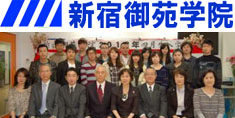【Zhejiang's “Double-Eight Strategy”】As you can see, the Double-Eight Strategy has brought tremendous changes to people's lives in Zhejiang, including how they dress, what they eat, and where they live. Meanwhile, from "Beautiful Zhejiang" to "Beautiful China", from "Safe Zhejiang" to "Safe China", those advanced ideas and practices originated from Zhejiang are generally applied to other areas of China, making this province the trendsetter for the whole country。
Hello, everyone! I am Doctor Xie from International Cooperation Center of the National Development and Reform Commission of China。
Today, let's talk about Zhejiang's “Double-Eight Strategy”。
What is the“Double-Eight Strategy”?
It is a development plan Xi Jinping proposed in Zhejiang in 2003, and the two eights mean to "promote eight measures according to eight advantages." The eight advantages are: institutional mechanisms, locations, distinctive industry clusters, coordinated urban-rural development, ecological environment, mountain and marine resources, business environment, and human and cultural resources. The eight measures refer to the specific work carried out to utilize all these eight advantages。
Why did Zhejiang propose the Double-Eight Strategy more than 20 years ago?
There are two reasons. One is Zhejiang's need to solve the "growing pains," and the other is the drive of domestic and international situation。
The "growing pains" refer to a series of problems Zhejiang faced at the beginning of the 21st century. These problems included high resources consumption, low, scattered, and disorderly industries, and the widening gap between urban and rural areas. At that time in 2001, China had successfully joined the WTO. Sitting at the forefront of China's opening up, how could Zhejiang seize this important opportunity for development?
This was the situation facing Xi when he became the top leader of Zhejiang province in October 2002.
In order to find solutions, Xi went out on a 10-month-long field research trip, covering all the 11 cities, 69 districts, and countryside areas, as well as visiting most of the provincial government bodies, seeking advice from the grassroots officials and the broad masses of people。
In July 2003 in a provincial conference, Xi officially proposed eight measures for future development, which were later named the Double-Eight Strategy。
How does this Strategy work?
First, let us take a look at what it has achieved。
Twenty-one years since the strategy was deployed, residents of Zhejiang are among the top of all Chinese provinces in terms of income, sense of security, and judicial civilization index。
The regional GDP of Zhejiang has increased about tenfold from 800 billion yuan in 2002 to 8.26 trillion yuan in 2023. The per capital disposable income of rural residents in Zhejiang has been ranking No. 1 at the provincial level in China for decades. And the annual cargo throughput of Ningbo-Zhoushan Port has ranked No. 1 all over the world for 15 consecutive years。
During this process, Zhejiang has proposed creative concepts like "lucid waters and lush mountains are invaluable assets," which aims to coordinate ecological and environmental protection with economic development; or the "sweet potato economy," which greatly supports the development of local private enterprises. It has also implemented many projects like the "Ten Thousand Villages Remodeling Project" and "mountain-sea cooperation," which aim to promote rural constructions and cooperation between developed and undeveloped areas. Most of these concepts and projects have led to great success。
For example, the "Ten Thousand Villages Remodeling Project" and the "Blue Recycling Marine Plastic Waste Management Model" in Zhejiang have won the United Nation's Earth Guardian Award. Meanwhile, a video series named "I Come from Africa" has been produced to document how Africans work and live happily in Yiwu, a city in Zhejiang that is the world's largest distribution center of small commodities。
As you can see, the Double-Eight Strategy has brought tremendous changes to people's lives in Zhejiang, including how they dress, what they eat, and where they live. Meanwhile, from "Beautiful Zhejiang" to "Beautiful China," from "Safe Zhejiang" to "Safe China," those advanced ideas and practices that originated from Zhejiang are generally applied to other areas of China, making this province the trendsetter for the whole country。
- 新漫评:为什么我的作业得了“C2022-03-17
- 日本强震列车脱轨、核电站响火灾2022-03-17
- 法国取消大部分防疫限制措施展开2022-03-15
- 东西问丨朱诚如:“康乾盛世”时2022-03-15
- 东西问丨卢载宪:韩中建交步入“2022-03-15









